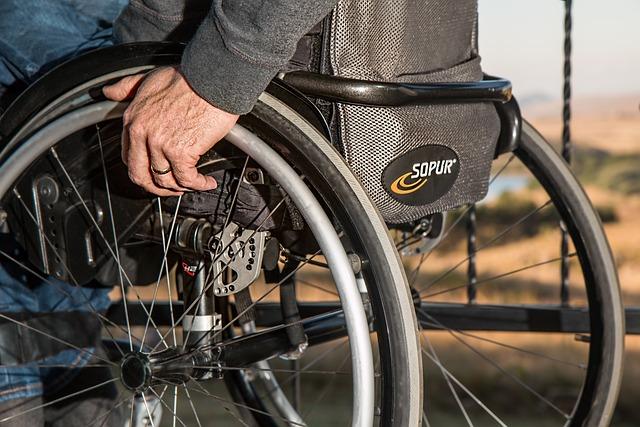When it comes to healthcare, patient safety is always the top priority. But even with the best intentions, misunderstandings and accidents can happen—and sometimes, they lead to injury claims. Protecting yourself as a healthcare provider isn’t about expecting the worst; it’s about being prepared and proactive. In this post, we’ll share practical tips to help you reduce risks, improve communication, and create a safer environment for your patients—and a smoother experience for you. Let’s dive in and explore how simple steps can make a big difference in avoiding patient injury claims.
Table of Contents
- Understanding Common Causes of Patient Injuries and How to Address Them
- Effective Communication Strategies to Build Trust and Prevent Misunderstandings
- Implementing Safety Protocols That Minimize Risks in Every Patient Interaction
- The Role of Documentation in Protecting Yourself and Enhancing Patient Care
- Final Thoughts
Understanding Common Causes of Patient Injuries and How to Address Them
Patient injuries often stem from a combination of preventable factors that healthcare providers can address to enhance safety and minimize risks. Common causes include medication errors, where incorrect dosages or drugs are administered, and communication breakdowns among medical staff or between providers and patients. Additionally, inadequate patient monitoring and failure to follow established protocols play significant roles in unintentional harm. Understanding these roots allows providers to apply practical strategies like checklists, active team communication, and thorough documentation to close gaps before injuries occur.
To effectively reduce incidents, healthcare professionals should focus on developing a culture of safety that embraces continuous education and transparency. Useful preventative steps include:
- Regular training and simulation exercises to sharpen staff skills and situational awareness
- Encouraging patient engagement by educating them about their treatments and involving them in decision-making
- Implementing technology solutions such as electronic health records and bar-code medication administration for accuracy
- Open incident reporting systems to learn from errors without blame
By proactively addressing these factors, caregivers can build trust, improve outcomes, and significantly lower the risk of patient injury claims.
Effective Communication Strategies to Build Trust and Prevent Misunderstandings
Clear and compassionate communication serves as the cornerstone of a strong patient-provider relationship. By actively listening and acknowledging patients’ concerns without rushing, healthcare professionals can create a supportive environment that fosters openness. Using plain language rather than medical jargon helps patients better understand their diagnoses and treatment plans, reducing confusion and anxiety. Additionally, confirming comprehension through techniques like teach-back empowers patients and ensures that both parties are on the same page—greatly minimizing the risk of misunderstanding or misinterpretation.
Incorporating regular check-ins and providing written summaries of appointments can further reinforce trust and clarity. Consider these actionable tips to enhance communication:
- Maintain eye contact to show attentiveness and respect.
- Encourage questions to invite active participation from patients.
- Be honest and transparent about risks and uncertainties involved in treatments.
- Use empathetic language to validate patients’ feelings and fears.
- Document discussions thoroughly in patient records for accurate reference.
By nurturing this two-way communication, healthcare providers can build a foundation of trust that not only enhances patient satisfaction but also serves as a vital shield against potential injury claims.
Implementing Safety Protocols That Minimize Risks in Every Patient Interaction
Creating a culture of safety begins with clear, consistent communication and adherence to standardized procedures. Every healthcare professional should be trained to carry out thorough patient assessments, which include verifying patient identity, understanding medical history, and identifying any potential allergies or contraindications. Regularly updating and reviewing protocols based on the latest evidence and feedback helps ensure that safety measures evolve with emerging risks. Implementing checklists and encouraging open dialogue among team members foster an environment where errors are caught early and addressed promptly.
Key practices to minimize risks include:
- Double-checking medications and dosages before administration.
- Maintaining proper hygiene and using personal protective equipment consistently.
- Documenting every step meticulously to maintain accurate patient records.
- Engaging patients in their care plans to empower them to speak up if something doesn’t feel right.
- Regularly conducting risk assessments in the care environment to identify and eliminate hazards.
The Role of Documentation in Protecting Yourself and Enhancing Patient Care
Accurate and thorough documentation serves as a vital shield for healthcare professionals, offering clear evidence of the care provided and the clinical reasoning behind each decision. When your notes are detailed and timely, they not only support continuity of care but also help demonstrate your commitment to patient safety, reducing vulnerability to claims. Remember, documenting isn’t just about jotting down facts—it’s about creating a reliable narrative that portrays your professionalism and dedication.
To make your documentation truly effective, incorporate these key practices:
- Be specific: Avoid vague phrases and include detailed descriptions of assessments, interventions, and patient responses.
- Keep it timely: Document as close to the patient interaction as possible to ensure accuracy and reduce errors.
- Use objective language: Stick to facts and avoid subjective assumptions or judgments.
- Chart changes promptly: Any changes in treatment or condition should be reflected immediately to maintain an up-to-date record.
- Maintain confidentiality: Ensure sensitive information is securely recorded in compliance with privacy standards.
Final Thoughts
Thanks for sticking with me through these important tips on protecting yourself from patient injury claims. At the end of the day, it’s all about clear communication, careful documentation, and staying attentive to every patient’s needs. By being proactive and fostering trust, you not only reduce the risk of claims but also create a safer, more positive experience for everyone involved. Remember, your dedication to quality care shines through in everything you do—keep it up, and you’ll be well on your way to a smoother, claim-free practice! Until next time, stay safe and take good care!






